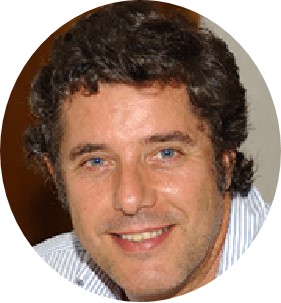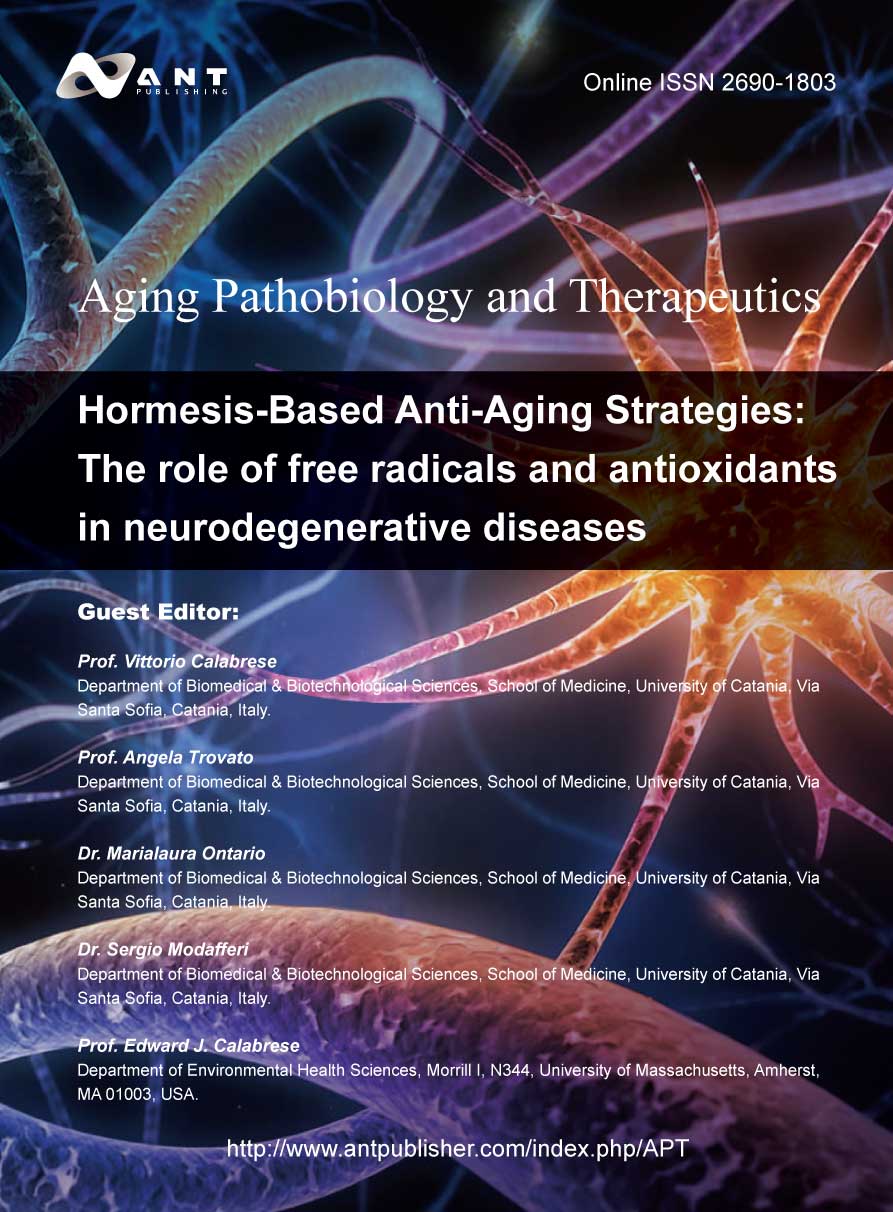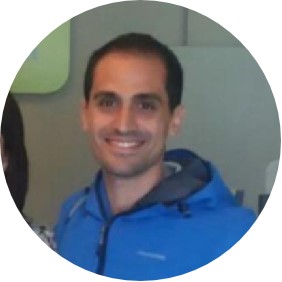Posted On 2023-05-22
 |
Guest Editor: Prof. Vittorio CalabreseDepartment of Biomedical & Biotechnological Sciences, School of Medicine, University of Catania, Via Santa Sofia, Catania, Italy.Email: calabres@unict.itWebsite: http://www.biometec.unict.it/docenti/vittorio.calabrese |
 |
Guest Editor: Prof. Angela TrovatoDepartment of Biomedical & Biotechnological Sciences, School of Medicine, University of Catania, Via Santa Sofia, Catania, Italy.Email: trovato@unict.it |
 |
 |
Guest Editor: Dr. Marialaura OntarioDepartment of Biomedical & Biotechnological Sciences, School of Medicine, University of Catania, Via Santa Sofia, Catania, Italy.Email: marialaura.ontario@ontariosrl.it |
 |
Guest Editor: Dr. Sergio ModafferiDepartment of Biomedical & Biotechnological Sciences, School of Medicine, University of Catania, Via Santa Sofia, Catania, Italy.Email: sergio.modafferi@gmail.com |
 |
Guest Editor: Prof. Edward J. CalabreseDepartment of Environmental Health Sciences, Morrill I, N344, University of Massachusetts, Amherst, MA 01003, USA.Email: edwardc@schoolph.umass.edu |
Editorial:
Targeting reactive oxygen species (ROS) while maintaining cellular redox signaling is crucial in the development of redox active interventions in mitochondrial medicine as the origin of several prevailing diseases including chronic neurodegenerative diseases is linked to ROS imbalance and associated mitochondrial dysfunction. Consistent with this notion anti-aging medicine is conceptually defined as a medical speciality founded on the application of advanced medical and scientific technologies for the early detection, prevention, treatment, and reversal of age-related dysfunction, disorders, and diseases. It is a healthcare model promoting innovative research to prolong the healthy lifespan in humans. In the twentieth century, the population are losing their health and lives to cancer, heart disease and neurodegenerative disease. These diseases, known as the diseases of aging, have an impact on the healthcare budgets worldwide. If we really want to make an impact on healthcare in the world, we must focus on the degenerative diseases of aging. If we can slow aging, we can eliminate more than 50 per cent of all diseases. It is possible to alter this dreadful course by delaying, preventing or reversing the diseases associated with aging. Application of any therapy or modality that delivers very early prevention, detection, treatment or reversal of aging-related dysfunction and disease, thus enhancing the quality and extending the length of the human lifespan is the most important new model for healthcare for this new millennium. During ageing low grade inflammation develops, which contributes to the pathogenesis of age related diseases. Emerging interest has recently focused on markers of oxidative stress and neuroinflammation in neurodegenerative disorders as abnormal redox homeostasis, oxidative stress and altered antioxidant systems have been considered important factors underlying the pathogenesis of major degenerative disorders, such as Parkinson’s disease (PD) and Alzheimer’s disease (AD). The body’s antioxidant capacity decreases, and the excessive accumulation of ROS lead to many health problems, such as cardiovascular diseases, diabetes, cancer, neurodegenerative diseases and so on. Basal levels of oxidants are indispensible for redox signaling to produce adaptive cellular responses such as vitagenes linked to cell survival, but at higher levels are detrimental to cells, contributing to aging and to the pathogenesis of numerous age-related diseases. Altered expression of genes related to oxidative stress, oxidative damage to DNA, protein and lipids, as well as alterations in the redox state act synergistically, and contribute to the course of major age-related diseases. However, the concept that low levels of stress can induce responses that may be protective against the pathogenic processes is a frontier area of neurobiological research focal to understanding and developing therapeutic approaches to neurodegenerative pathologies. This special Issue want introduce and elucidate i the concept of cellular stress response and hormesis and its applications to the field of neuroprotection. Hormetic mechanisms are reviewed as possibility of targeted therapeutic manipulation in a cell-, tissue- and/or pathway-specific manner at appropriate points in the AD and PD disease processes. We aim to address and propose the potential therapeutic utility of nutritional polyphenols, in particular those with high potential in Nrf2 activation, inhibition of Keap1-Nrf2 protein–protein interaction and degradation as substantial regulators of the Nrf2 related pathway. Nutritional polyphenols are considered as potential pharmacological modulators of neuroinflammation and activators of the Keap1/Nfr2/ARE pathway as a rationale for treating neurodegenerative disorders. Hence, emerging interest is focusing on the neuroprotective and anti-neuroinflammatory effects of herbal medicines for enhancing stress resilience and brain health in humans. Recent evidence demonstrates that mushroom polyphenoils, olive oil polyophenols, sulphuraphane or saffron and its major constituents counteracts and neutralizes genetic and environmental stressors, particularly oxidative stress, mitochondrial dysfunction and neuroinflammation closely connected to brain disorders initiation and progression. Interestingly, these compounds, underlying the emerging principles of hermetic nutrition, can exert antioxidant or toxic effects depending on their endogenous concentration. According to the hormesis approach, they at low dose act as antioxidants in a wide range of brain diseases by upregulating Nrf2 signaling pathway and the expression of vitagenes, such as NAD(P)H-quinone oxidoreductase (NQO1), glutathione transferase (GT), GPx, heme oxygenase-1 (HO-1), sirtuin-1 (Sirt1) and thioredoxin (Trx) system which play an important role in the metabolism of reactive oxygen species (ROS), detoxification of xenobiotics and inhibition of neuronal death, by blocking ROS production and neurotoxic damage. Importantly, neuronal dysregulation of Nrf2 pathway can be a prominent cause of selective susceptibility under neuroinflammatory conditions due to the high vulnerability of brain cells to oxidative stress. Here we will discuss, general mechanisms targeting Nrf2/vitagene pathways for development of new therapeutical strategies to suppress oxidative stress and neuroinflammation and consequently cognitive dysfunction, summarizing major neuroprotective and anti-neuroinflammatory properties as well as pharmacological perspectives in brain disorders.
Completion Date
March 31, 2023
Participants
Hiroomi Tamura, Faculty of Pharmacy, Keio University, 1-5-30 Shibako Minato-ku, Tokyo 105-8512, Japan.
Abiola Folakemi Olaniran, Department of Food Science and Microbiology, College of Pure and Applied Sciences, Landmark University, P.M.B 1001, Omu-Aran, Nigeria.
Iván A. García-Montalvo, Division of Postgraduate Studies and Research, Tecnológico Nacional de México/Instituto Tecnológico de Oaxaca, Oaxaca City, Oaxaca, México.
Olubukola H Oyeniran, Functional Foods, Nutraceuticals and Phytomedicine Unit, Department of Biochemistry, Federal University of Technology, Akure, Nigeria.
Shigeo Ohta, Department of Neurology Medicine, Juntendo University Graduate School of Medicine, 2-1-1 Bunkyo-ku, Tokyo, 113-8431, Japan.
Luis Apaza Ticona, Organic Chemistry Unit, Department of Chemistry in Pharmaceutical Sciences, Faculty of Pharmacy, Universidad Complutense of Madrid, Plza. Ramón y Cajal s/n, 28040, Madrid, Spain.
Steven Brenner, Department of Neurology and Psychiatry, Saint Louis University, School of Medicine, Montelone Hall, 1438 South Grand Boulevard, Saint Louis, Missouri 63104, United States of America.
Leila Chekir-Ghedira, Laboratoire de Biologie Moléculaire et Cellulaire, Faculté de Médecine Dentaire de Monastir, Université de Monastir, Monastir, Tunisia.
Jan Masan, University of St. Cyril and Methodius in Trnava, Slovakia.
Catia Scassellati, Biological Psychiatry Unit, IRCCS Istituto Centro San Giovanni di Dio Fatebenefratelli, Brescia, Italy.
Marina G Makletsova, Department of Biology and General Pathology, Don State Technical University, Gagarin Square 1, Rostov-on-Don 344011, Russia.
Anne Poljak, Centre for Healthy Brain Ageing, School of Psychiatry, University of New South Wales, Sydney, NSW 2052, Australia.
Johnson O Oladele, Department of Chemical Sciences, Biochemistry Unit, Kings University, Ode-Omu, Nigeria.
Table of Contents
Therapeutic Brief
|
Shigeo Ohta
Received: Friday, December 30, 2022 Published: Tuesday, May 23, 2023
|
